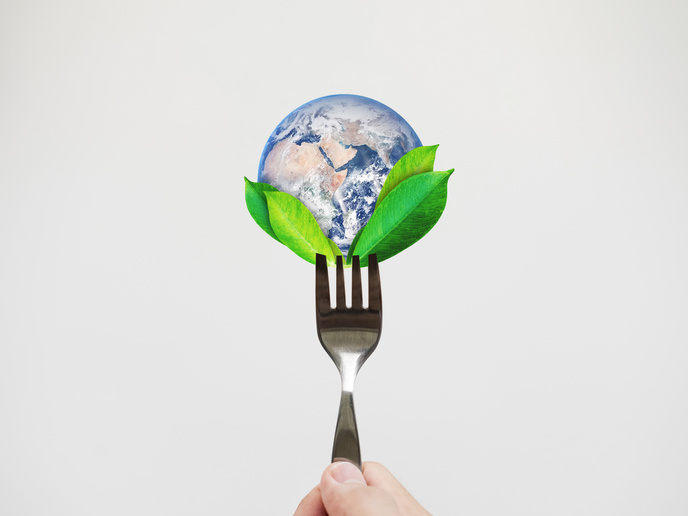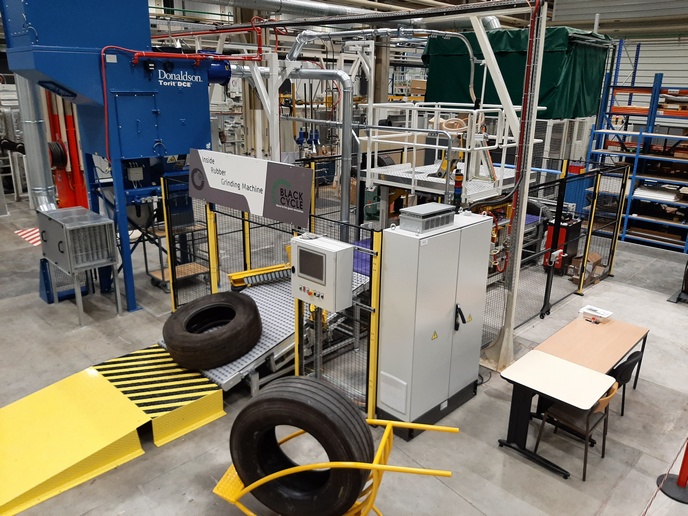Green fertilisers from domestic sewage
Conventional domestic wastewater treatment is based on an obsolete ‘end of pipe’ concept. Different streams of wastewater are mixed and transported through several kilometres of sewerage to a centralised wastewater treatment plant. There, only a fraction of diluted nutrients and resources can be recovered while a significant quantity of clean water is wasted for transport.
Innovative technologies for wastewater treatment
The EU-funded RUN4LIFE project proposed a new approach to efficiently recover resources (water, energy and nutrients) at the source, in decentralised treatment plants. “The idea was to separate wastewater streams as black water (BW), kitchen waste (KW), and grey water at the source and increase the recovery and reuse rates for each stream,” explains project coordinator Frank Rogalla. Project partners developed a series of innovative technologies, such as an ultra-low flush vacuum toilet system that halves the flushing water consumption compared to existing models. This reduces the volume of sewage, which is then digested by hyperthermophilic anaerobic microbes that thrive in hot conditions without oxygen. The end-result is safe fertilisers in a one-step treatment. Incorporation of a bioelectrochemical system concentrates ammonia and produces a liquid ammonium nitrate fertiliser. RUN4LIFE also combined conventional processes already used in centralised processes, including recovery of phosphorus, anaerobic treatment, as well as aerobic and anaerobic membrane bioreactors. The latter recover energy from BW in the form of biogas and produce high-quality pathogen-free water.
Implementation of RUN4LIFE treatment systems
To ensure the safety and consistent quality of RUN4LIFE treatment systems, the technologies were implemented in large-scale decentralised demonstration sites in four cities in Europe (Ghent in Belgium, Vigo in Spain, Sneek in the Netherlands, and Helsingborg in Sweden). Each site featured its own combination of different waste flows, innovative treatments and recovery technologies, adapted to the wastewater characteristics, local regulatory requirements and local needs of the recovered resources. “The RUN4LIFE’s system segregated domestic wastewater from more than 470 apartments, public infrastructures and office buildings,” outlines technical project coordinator Nicolás Morales-Pereira. The sites at Helsingborg, Ghent and Vigo produced a slow-release phosphorous fertiliser, suitable for agricultural use, through a struvite precipitation process. In Helsingborg, combination with ammonium sulfate generated NPK pellets, a tailor-made fertiliser of good properties due to its organic matter and nutrient content. Furthermore, Sneek and Vigo implemented hyperthermophilic anaerobic digestion and anaerobic membrane bioreactors, respectively, to generate a nutrient rich liquid stream suitable for fertigation applications. The fertiliser value of the products obtained was demonstrated in pot and field-scale experiments.
RUN4LIFE decentralised wastewater treatment prospects
Overall, RUN4LIFE demonstrated the viability of an alternative wastewater treatment process based on decentralised facilities and stream segregation. The proposed approach maximises resource recovery and promotes circular economy. Project partners conducted life cycle assessments to verify the potential for innovation, sustainability and the environmental benefits of the different technologies and RUN4LIFE configurations. As an example, compared to conventional systems, the Ghent demonstration site exhibited a 26 % decrease in the environmental impact during nutrient recovery and fertiliser production. Many RUN4LIFE products are commercially exploitable, while business cases have been designed for each demonstration site with the potential to be implemented elsewhere. Moreover, certain project technologies will be used in the EU-funded projects REWAISE and VIVALDI.
Keywords
RUN4LIFE, fertiliser, domestic wastewater, decentralised wastewater treatment, bioreactor, struvite







